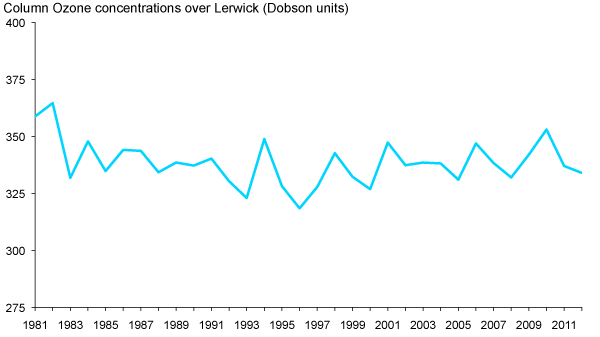Key Scottish Environment Statistics 2013
This publication aims to provide an easily accessible reference document which offers information on a wide range of environmental topics. It covers key datasets on the state of the environment in Scotland, with an emphasis on the trends over time wherever possible. The data are supplemented by text providing brief background information on environmental impacts, relevant legislation and performance against national and international targets.
This document is part of a collection
Column Ozone Measurements: 1981-2012

The stratospheric ozone layer, located around 10-30 km above the Earth's surface, forms a protective shield against harmful solar (UVB) radiation.24 Thinning of the ozone layer has occurred since the beginning of the 1980s in all regions except equatorial ones. Depletion is most marked in the Antarctic where, in 2006, the Antarctic ozone hole reached 29.5 million square kilometres in area (over 300 times the land area of Scotland).
The 1987 Montreal Protocol set guidelines to eliminate the global production and use of ozone depleting substances. European production of CFCs for non-essential use fell to zero in 1995. However, leaks form old equipment and the long life of these substances mean that full recovery of the ozone layer is not predicted until about 2050.
The total ozone levels at Lerwick vary seasonally, with maximum levels generally occurring in early spring and minimum levels in autumn. Over the last 30 years, the annual average total ozone cover over Lerwick has shown the natural interannual variability which would be expected due to varying meteorological conditions. Generally, levels have decreased over this period. More recently, it appears that this trend may be levelling out, but it is too soon to be sure.
Source: AEA Energy and Environment / Metadata
Contact
Email: Callum Neil
There is a problem
Thanks for your feedback